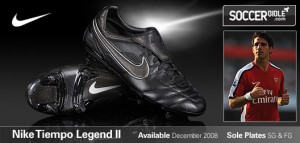Like most things, every product has a lifespan. From its introduction to the market and its withdrawal from it. In between, the product experiences growth, maturity and then finally decline. However, what if a product can extend its lifespan, cheat death and continue to live while others die out? Probably driven by the same inspiration that pushed mankind’s deep and dark history of searching for immortality, marketers have found ways to delay a product’s withdrawal from a market.
Ok I exaggerate a little bit. Many companies actually do this, it’s called Product Life Extensions. A good example of this strategy, is releasing new and upgraded versions of previous products. This includes, slightly altering the existing product and repacking it. When Diet Coke was first introduced in 1983, it gave Coca-cola a much needed boost in sales as many of the consumers were becoming health conscious. By doing this Coke delayed its decline of the Coke brand. Coca-cola continued to this many times in the following years, an idea of infusing different flavours with the original coke saw the rise of Cherry Coke, Vanilla Coke and several others. In this case, Coca-cola saw that there was an opportunity to capture more demand for a different tasting soft drink and therefore regulate sales for the coming years.
There are also other ways to extend a product’s life. The price reduction of a product can be used at the declining stage of the life cycle, just to squeeze a little bit more cash out of that product. However, this seems like a more short term strategy as in most cases, the cause of the decline of a product is because it is starting to become obsolete. Entering new markets can also be seen as an extension.
However, I would sometimes like to question the ethical decisions made by firms regarding product life cycle extensions, particularly in the case of the electronics industry. It has become aware amongst consumers that electronic companies like Apple, Nokia, and Samsung do not release their latest capabilities on their newest products. For example, the lithium battery that we used in mobile technology were readily available for production years before its eventual release. More recently, Apple chose to install i7 processor technologies for their newest Macbook Pro 15 and 17 inch laptops, one and a half years after its original release. I mean, why couldn’t the original come with the i7 processors. Surely, it was available to such a technological advanced company like Apple right?
I think it is fair to suspect that companies such as Apple retail products that do not offer the best capabilities that they CAN offer. Eventually, they systematically alter and repackage some products to strategically capture more profit from the consumers’ pockets, by means of product life cycle extensions.












